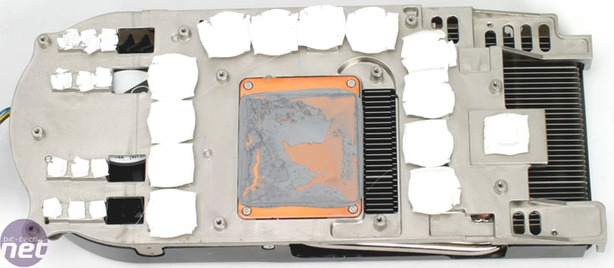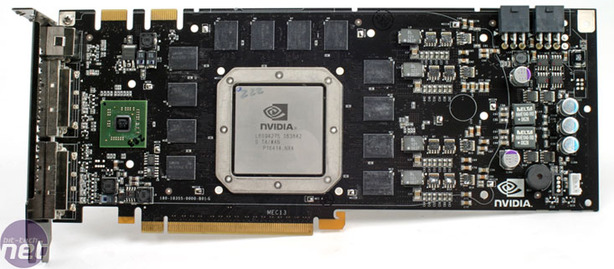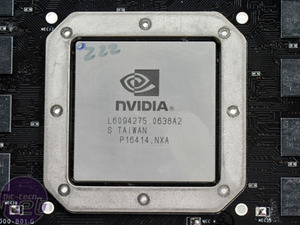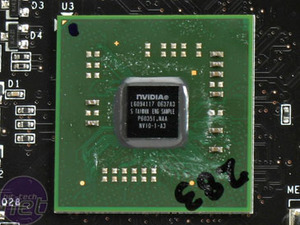
Under the heatsink


The twelve memory chips on the GeForce 8800 GTX split down into six 64-bit memory channels (with two DRAMs per channel), combining for a total 384-bit memory interface width. The memory crossbar design is very similar to the design used in GeForce 7-series hardware, and comes complete with support for DDR1, DDR2, DDR3, GDDR3 and GDDR4 memory types. Currently, NVIDIA is using GDDR3 memory on both GeForce 8800 GTX and 8800 GTS – how long do you think it’ll be before NVIDIA launches a GDDR4 version?
You can see that the GPU core dominates the surface of the board - it's massive, far larger than any GPU we've seen previously. The heatspreader on top lacks any particular identifying markings - there's a disappointing lack of 'G80' anywhere on there for bragging rights. It's made on TSMC's 90nm manufacturing process and has a massive 681 million transistors under the hood - we told you it was the most complex graphics chip ever made - it's more than double the number of transistors in a single G71.
You may see the chip, and consequently the boards, get smaller next year when NVIDIA moves to shrink G80 to a 65nm process. The second chip you can see controls input/output functions and basically functions as the RAMDAC, albeit slightly more advanced. Amusingly, it's marked as NVIO, which looks a little close to NV10, the codename for the original GeForce 256. The chip comes with support for two dual-link DVI ports with HDCP support and an HDTV-Out port to round things off.

MSI MPG Velox 100R Chassis Review
October 14 2021 | 15:04











Want to comment? Please log in.